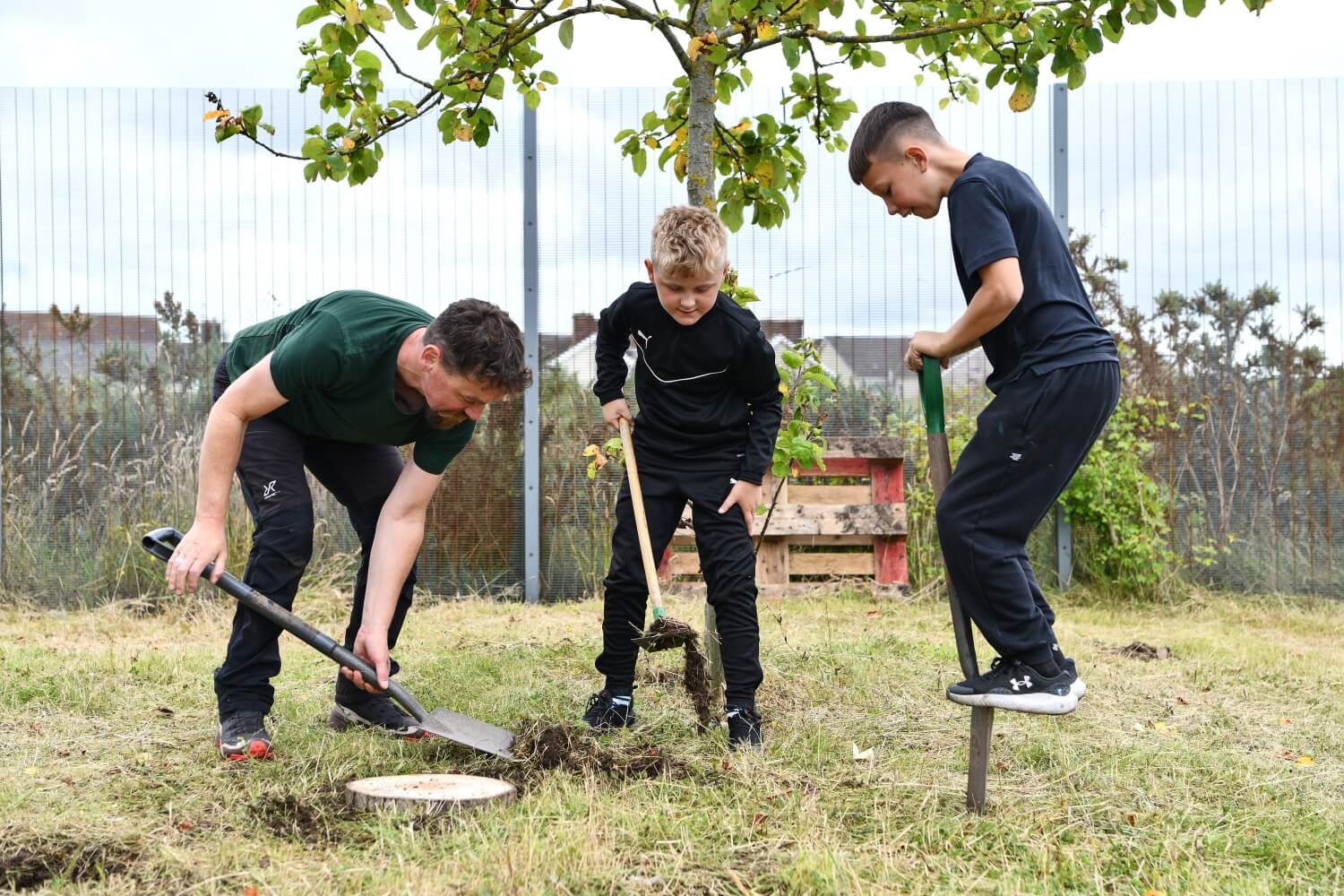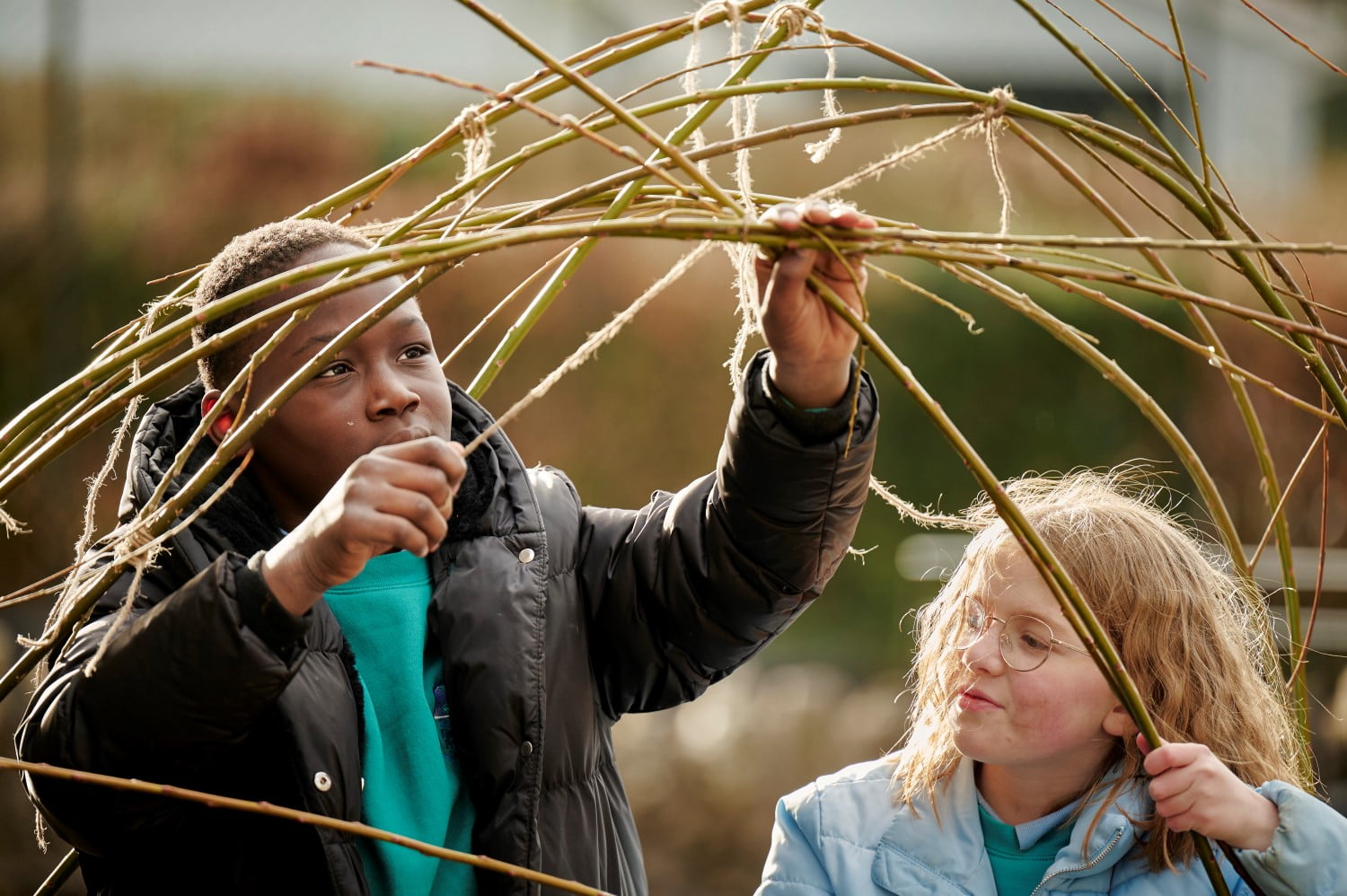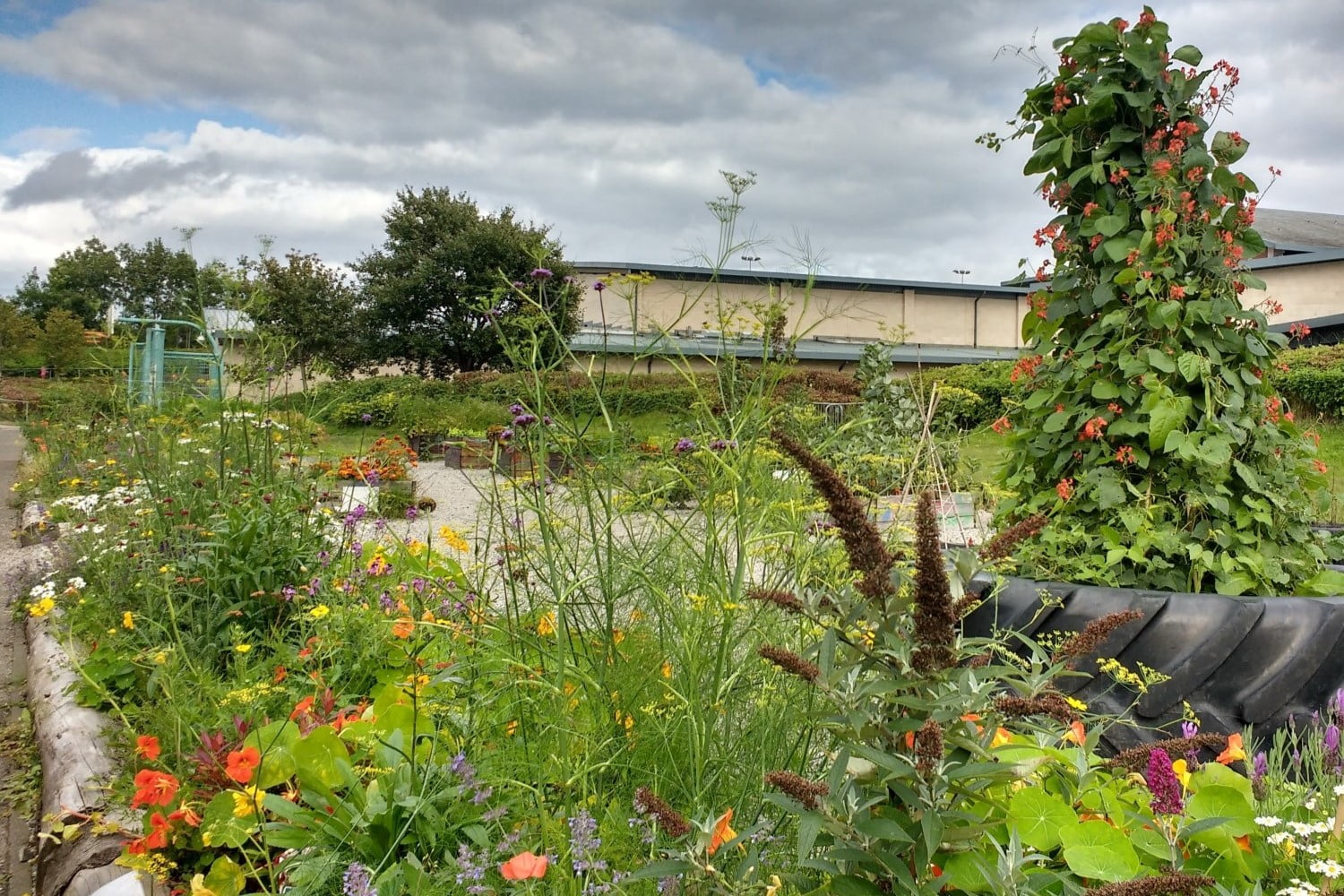Why school grounds must be part of the climate change solution
Find out how school grounds can bolster climate resilience, encourage biodiversity, and promote climate action through learning and play in nature rich environments.
In 1990, Learning through Landscapes (LtL) was born from a three-year research project that revealed a powerful truth: school grounds have the potential to transform the lives of children and young people. However, it also exposed a stark reality: many of these spaces were uninspiring, underused, and disconnected from learning, play, and wellbeing.
Financial constraints and traditional management practices mean that many are, at worst, close-mown, sterile, windswept spaces or tarmac expanses making little contribution to the school curriculum or to the environment in general.
— Learning through Landscapes Report, 1990
Thirty-five years later, we find ourselves facing a familiar challenge, with even higher stakes due to our changing climate. Now, there is more evidence than ever before to show that well designed school grounds bolster climate resilience, encourage biodiversity, and promote climate action through learning and play in nature rich environments — which is why school grounds must be part of the solution to climate change.
A climate crisis on our doorstep
Today’s children are growing up in a rapidly changing world with a rapidly changing climate, and while we continue to talk about reducing emissions, the reality is that climate adaptation — not just mitigation — is now essential.
Our school grounds are already feeling the effects of climate change. Over 50% of schools in Scotland report that climate change is impacting their ability to use outdoor spaces. Across the UK, 82% of surfaces in school grounds are asphalt, grass, or artificial surfaces like plastic turf and rubber ‘safety surfaces’. These materials may seem practical, but they are far from climate-resilient. In fact, they are actually contributors to the climate and nature emergency, which do little to support learning, play, or biodiversity.
Why this matters for learning and wellbeing
Poorly designed outdoor environments do not just limit learning, play, and sport, they can worsen overheating in classrooms, offer no shelter from wind or rain, and contribute to flooding. The UK climate risk assessments already highlight that children and education settings are more vulnerable to the effects of climate change. More recently, the Department for Education released figures predicting more interruptions to learning due to climate related flooding and heatwaves.
However, there is hope — and it is growing.
A groundswell of change
Our work in schools across the UK shows that educators, parents and, most importantly, young people are ready for change. Teachers are drawn to using engaging, experiential outdoor pedagogies, children are asking to share spaces with more nature, and schools are doing what they can — often with limited budgets and a burden of bureaucracy and opposition — to improve their grounds.
Of course, the UK’s climate and geography is varied, and each school will face its own local challenges. For those in the south-east of the UK, overheating and drought loom. For those further west, we face winds and extreme rainfall. For those in the north, it is increased rain, wind, and milder winters. Every school needs to understand their own issues, starting with a thorough school grounds audit to inform change.
However, there is one change we can make to improve school grounds everywhere. In our Scottish School Grounds Survey, the most common request was simple: more nature in the form of trees, shrubs, flowers, and ponds. Our staff observe that this is the same in England, Wales, and Northern Ireland. Schools want to create spaces that are not only usable year-round, but also joyful, healthy, and sustainable. They want nature in school grounds.
Nature-based solutions work
We know that nature-based solutions are effective. They cool the air and reduce overheating, manage water through soil and root systems, provide shelter from wind and rain, support biodiversity and wellbeing through connection to nature — and we are not alone in seeking out solutions either. Around the world, schools and educators are leading the way:
- In Paris, Oasis Schoolyards transform grey playgrounds into green, climate-resilient spaces.
- In Barcelona, climate shelters offer shade, water management, and learning opportunities.
- In Belgium, managing water on school grounds is helping to prevent floods.
- In California, Schoolyard Forests are sheltering children and communities.
- And in Accra, London, Madrid, Rio de Janeiro, and elsewhere, the C40 Cool Cities Network is adapting schools to rising urban temperatures.
Clearly, change is possible, and it is already taking place. We have seen what’s possible when ambition becomes policy:
- Over 80% of Scottish secondary schools now have bike sheds thanks to active travel policies.
- Thousands of schools are installing solar panels through innovative finance schemes.
- Thousands of schools are taking up free tree programmes from the Woodland Trust and Trees for Cities.
- In Wales and Scotland, daily outdoor play is a legal right; sustainability is embedded in the curriculum and outdoor learning expected of all teachers and educators.
We know that nature rich outdoor environments support climate resilience and biodiversity in the local area, encourage good wellbeing and personal development, and promote nature connection and climate action among our children and young people — which is why we must prioritise school grounds in our response to climate change.
Join us in creating climate ready school grounds
Whether you are a teacher, parent, journalist, or policymaker, you can be part of the movement to create the climate ready school grounds of the future. At Learning through Landscapes, we help schools and early years settings to make the most of their outdoor spaces, ensuring that more children can enjoy the benefits of outdoor learning and play. To support you in taking the next step, we offer:
- Practical guidance on creating Climate Ready School Grounds
- Support implementing quality climate education through Climate School 180
- Funded support, including a school grounds survey and climate curriculum kit, through our Local School Nature Grants
- Outdoor learning and play training and school grounds advisory visits for schools and early years settings
Together, we can ensure that outdoor learning and play are not occasional extras, but an integral part of every school day — and that our school grounds are ready for the future we face.













